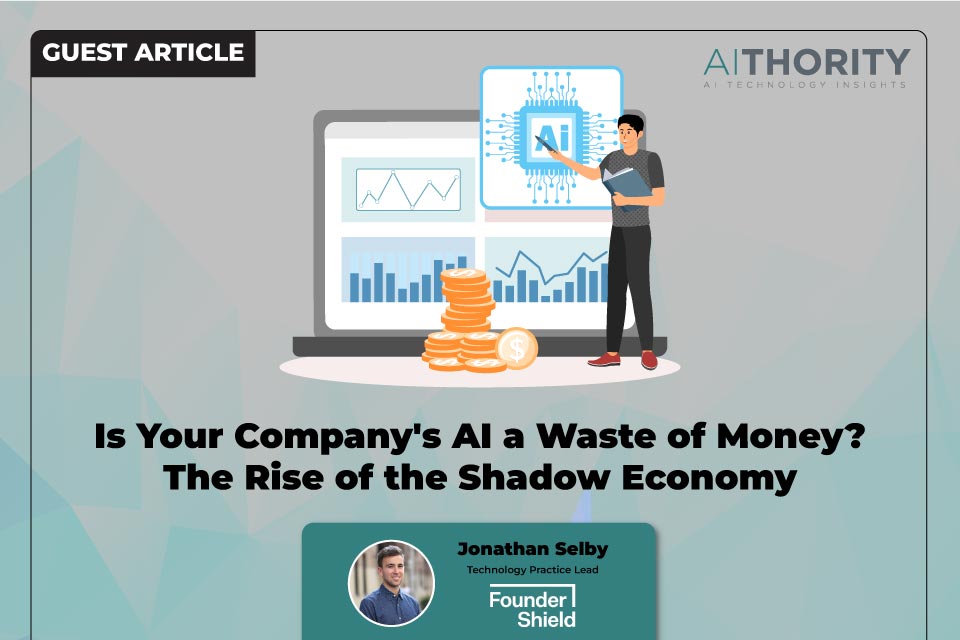Even with corporations pouring billions into AI, a stunningly small quantity truly see actual enterprise worth from official instruments—that’s the AI utility hole. This frustration is producing a “Shadow AI” world the place workers sneakily use private instruments like ChatGPT as a result of the accepted stuff simply doesn’t reduce it. This isn’t office insurrection; it indicators a basic mismatch. We should see this “shadow” use not solely as a critical danger but additionally because the clearest sign but of the place true innovation lies. Corporations must urgently bridge this hole.
Why the Shadows Are Rising
The explanation for the Shadow AI surge is easy: corporate-sanctioned AI instruments are sometimes subpar. We’ve all seen the standard company AI rollout: it’s a large, advanced mission that feels completely over-engineered and clunky from day one. By the point it lastly navigates the lengthy procurement cycle and hits your desktop, it’s in all probability already gradual, poorly built-in, and utterly lacks any real user-centric design. It appears like a chore, not a useful co-pilot.
Workers, nevertheless, are targeted on getting the job carried out. They’re pushed by core wants that the company instruments fail to satisfy. Client-grade AI like ChatGPT is immediately interesting due to its sheer ease of use; you may soar in and resolve an issue instantly. This delivers direct utility, tackling rapid, day-to-day work—summarizing a mountain of emails, drafting a tough first-pass report, or brainstorming ten choices for a presentation.
Maybe most critically, these private instruments provide autonomy. Folks get to experiment and discover a answer that matches their distinctive workflow, as a substitute of being shoehorned right into a pressured, one-size-fits-all digital course of.
Due to this fact, the expansion of the shadow economic system isn’t some digital insurrection or an indicator of malicious intent. It’s an inevitable final result and a transparent symptom of a misaligned technique. Workers aren’t making an attempt to interrupt the foundations; they’re merely making an attempt to seize the enterprise worth that the official, slow-moving company initiatives did not ship. They’re searching for utility the place they will discover it.
Additionally Learn: AiThority Interview with Jonathan Kershaw, Director of Product Administration, Vonage
The Risks Lurking within the Darkish
Whereas workers are simply making an attempt to be productive, the unmanaged use of private AI instruments introduces critical, typically invisible, systemic dangers.
Essentially the most rapid hazard is the compliance and information leak dilemma. When an worker pastes a draft contract, proprietary supply code, or a buyer’s personal medical historical past right into a public instrument like ChatGPT, they’re, in impact, feeding that essential, delicate, or regulated info on to a 3rd celebration. This creates instantaneous and extreme violations of information legal guidelines like GDPR or CCPA, to not point out the whole lack of mental property. The danger of large monetary penalties and litigation right here is acute.
Moreover, this follow creates a large safety blind spot. IT and safety groups have zero visibility into what information is being shared, which unvetted, consumer-grade APIs are interacting with the corporate community, or what unpatched vulnerabilities these instruments may expose. The corporate’s digital perimeter is abruptly porous and unimaginable to defend, dramatically growing the general cyber danger profile.
Lastly, there’s the sheer waste of the redundancy lure. You’re already paying billions for enterprise licenses that no one makes use of, and now workers are sometimes paying out-of-pocket for his or her most well-liked shadow instruments. This creates a chaotic, redundant, and financially inefficient tech stack. Plus, counting on unverified outputs for essential duties introduces an unavoidable misinformation and bias danger, as “hallucinated” or prejudiced AI outcomes can quietly creep into official enterprise choices, resulting in organizational failure or unhealthy outcomes.
From Management to Collaboration: A New Blueprint for Danger Administration
To efficiently handle the AI utility hole, corporations want a whole mindset shift. The outdated, reactive “ban and block” mentality should be changed with a proactive “empower and govern” strategy. We should handle the chance of worker utilization, not attempt to get rid of the utility they crave.
The primary essential step is to get seen. You may’t govern what you may’t see. Corporations must conduct a fast, non-punitive audit to actually perceive the scope of the shadow economic system. What particular instruments are workers utilizing, and—extra importantly—what duties are they fixing? This gives the required baseline information for a authentic technique.
Subsequent, you will need to construct a bridge, not a wall. As a substitute of immediately blocking each client instrument, you need to create a transparent, accessible, and user-friendly AI acceptable use coverage. This coverage shouldn’t be a 50-page authorized doc; it ought to be an academic information that teaches workers the dangers and clearly specifies which sanctioned instruments can be utilized for which functions.
Use the info gathered to make investments with intent. Cease funding monolithic, top-down methods that no one likes. Future AI investments ought to deal with offering safe, user-friendly, and inside instruments that immediately meet the precise, confirmed wants recognized by the audit. The sanctioned instrument should be the superior possibility.
Lastly, empower the innovators. Encourage workers to carry their profitable AI use circumstances and even their most well-liked workflows right into a managed surroundings. By making a collaborative governance framework, you efficiently rework a hidden safety legal responsibility right into a well-managed, dynamic innovation pipeline.
The Future Is Not a Undertaking, It’s a Partnership
The shadow AI economic system isn’t a risk to dam, however a robust sign of unmet worker wants. Future enterprise worth received’t be present in company initiatives; it calls for a partnership. Success means transferring previous preventing the workforce and embracing collective, managed innovation throughout all the firm.
About The Writer Of This Article
Jonathan Selby is Expertise Apply Lead at Founder Protect
Additionally Learn: A Pulse Test on AI within the Boardroom: Balancing Innovation and Danger in an Period of Regulatory Scrutiny
[To share your insights with us as part of editorial or sponsored content, please write to psen@itechseries.com]


